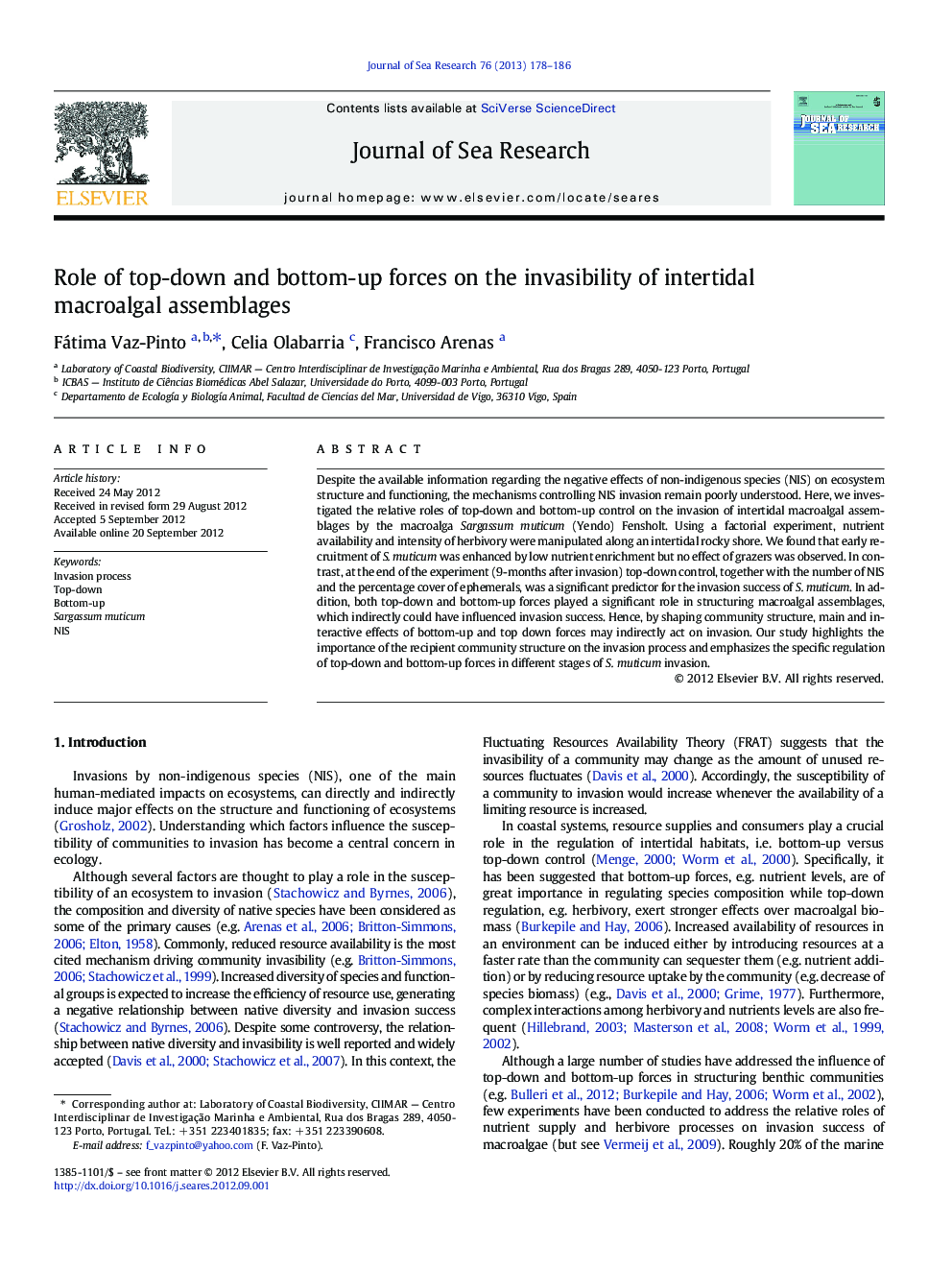| Article ID | Journal | Published Year | Pages | File Type |
|---|---|---|---|---|
| 4549897 | Journal of Sea Research | 2013 | 9 Pages |
Despite the available information regarding the negative effects of non-indigenous species (NIS) on ecosystem structure and functioning, the mechanisms controlling NIS invasion remain poorly understood. Here, we investigated the relative roles of top-down and bottom-up control on the invasion of intertidal macroalgal assemblages by the macroalga Sargassum muticum (Yendo) Fensholt. Using a factorial experiment, nutrient availability and intensity of herbivory were manipulated along an intertidal rocky shore. We found that early recruitment of S. muticum was enhanced by low nutrient enrichment but no effect of grazers was observed. In contrast, at the end of the experiment (9-months after invasion) top-down control, together with the number of NIS and the percentage cover of ephemerals, was a significant predictor for the invasion success of S. muticum. In addition, both top-down and bottom-up forces played a significant role in structuring macroalgal assemblages, which indirectly could have influenced invasion success. Hence, by shaping community structure, main and interactive effects of bottom-up and top down forces may indirectly act on invasion. Our study highlights the importance of the recipient community structure on the invasion process and emphasizes the specific regulation of top-down and bottom-up forces in different stages of S. muticum invasion.
► Top-down and bottom-up drivers shape the invasion success at different temporal stages. ► Early recruitment by Sargassum muticum influenced by nutrient availability ► Final invasion success predicted by herbivory and composition of recipient assemblage ► Top-down and bottom-up forces also had a role in structuring macroalgal assemblages.
